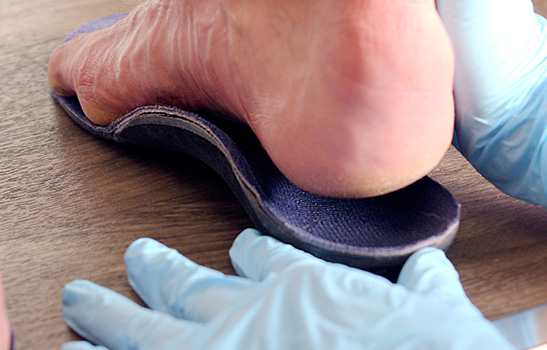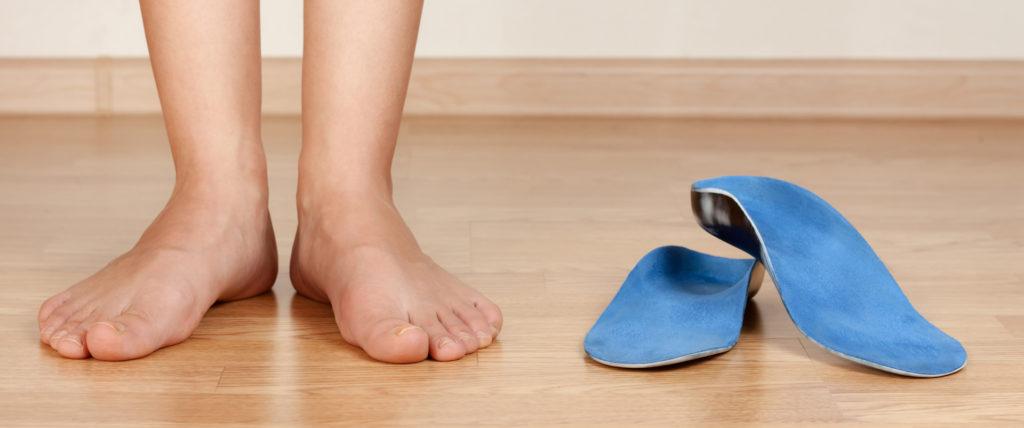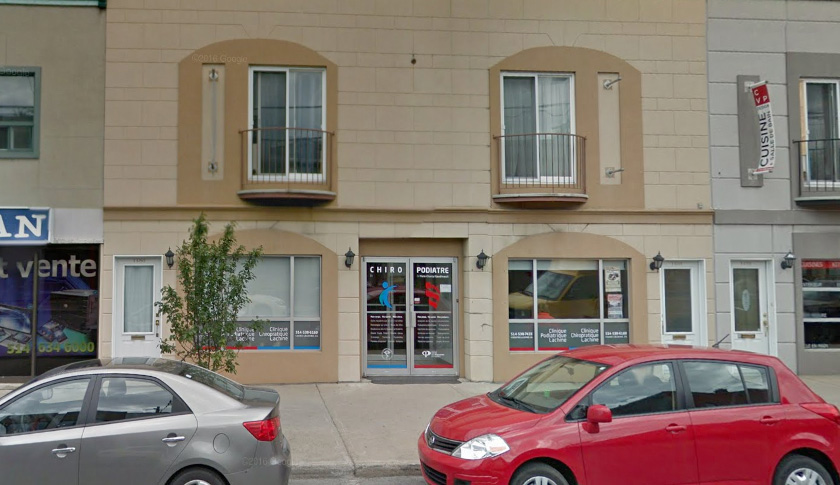Flat feet
Flat foot is a condition whereby the arch of the foot is excessively collapsed, which causes the bones of the foot to become misaligned. This condition leads to a loss of foot stability, bad posture and an incorrect gait, and may result in a number of aches and injuries.
See the causes See the long term complications See how to relieve yourself at home
Signs and symptoms of flat feet
Even though flat feet often cause pain, they can also give rise to a number of other signs and symptoms:
- Collapsed plantar arches
- Misaligned ankles
- Abnormal or excessive wear and tear of shoes
- Fatigue when walking or doing other activities
- Pain under the arches of the feet or in the heels or ankles
- Pain or fatigue in the legs
- Pain and tension in the lower back
- Sensitivity in the inner knees or outer hips
- Foot and ankle instability, sometimes causing sprains
- Bad balance
What is the cause of flat feet
Flat feet can have a number of causes. Heredity, bone shape and leg alignment are some of the factors which must be considered, along with the following:
- Loose ligaments
- Hypermobility of the bones in the foot
- Family history of flat feet
- Shape of the bones in the foot, for example the 1st metatarsal
- Bowed legs
- Internal hip rotation
- Short Achilles Tendon
- Locking of ankle
- Deficiency of supporting muscles and/or hypotonia
- Bone coalition
- Compensation for a leg length discrepancy
- And many more
Progression and consequences of flat feet
When the bones of the feet interlock, they form a solid and stable foundation from which we can propel ourselves forward to walk, run or jump… However, when the foot collapses, bone congruence is affected and the foundation becomes unstable, which makes propulsion inefficient and shock absorption difficult. As a comparison, we all noticed at the beach that walking on soft sand, an unstable base, is more difficult than walking on a solid base (like a sidewalk) because it facilitates propulsion and requires less energy.
Flat feet may lead to problems in the joints, muscles, ligaments and the neurological system. Certain joints may lock or freeze up, muscles may overstretch or tire quickly and ligaments may lengthen, affecting proprioception.
The feet being the supporting structure of the body, their misalignment has a domino effect on overall posture. Following the feet, the ankles turn inwards, this leads to an excessive inner rotation of the shins and, consequently, the knees. And since the femur connects the knees to the hips, there is an inner rotation of the entire pelvis, which exaggerates the back curvature and brings instability to the entire lower body.
The following is a list of some of the main issues flat feet can cause:
- Frequent sports injuries
- Plantar fasciitis and heel spur
- Achilles tendinitis
- Tibialis posterior tendinitis
- Bunions (hallux valgus) and hammertoes
- Chronic pain caused by bad posture (in the ankles, knees, hips and back)
- Sprains and ankle instability
- Morton’s neuroma (or plantar neuroma)
- Capsulitis and metatarsalgia
Not only are flat feet at the source of many injuries, but they can also have long-term negative effects. First and foremost, calcification and spurs may appear on bones that are submitted to excessive strain (see Heel spur and Achilles tendinitis). Osteoarthritis, joint damage caused by wear and tear, may develop in the misaligned joints of the flat foot. This is more commonly observed in the joints on the top of the foot and in the big toes. The other joints involved in posture may also wear down more rapidly, increasing the risk of osteoarthritis.
How to relieve a flat feet pain at home
In adults with flat feet, the condition cannot be permanently corrected and altering the gait is no longer possible. It’s a bit like being near-sighted. You can’t force your eyes to see farther! However, certain exercises can help relieve the strain caused by flat feet:
- Massaging the arch of the foot using a golf or tennis ball
- Stretching the calves
- Reinforcing the plantar muscles by grabbing objects or a towel placed on the ground with the foot
- Reinforcing the leg muscles by standing on tiptoes
It is best to avoid shoes that are completely flat and opt instead for a small heel which helps raise the plantar arch. People with flat feet must also choose sturdier shoes which will resist to twisting. Finally, shoes with laces can more easily be adjusted to the foot and provide better support.
While insoles that can be bought at a drugstore provide additional cushioning, they offer no real arch support since they don’t modify the position of the foot nor adequately spread out the pressure. Although they can provide short-term relief, they must not be used as a long-term solution. If you have flat feet, it is important you see a podiatrist.
Diagnostic of flat feet
- A thorough biomechanical exam is essential not only to establish a podiatric diagnosis, but also to evaluate the severity of the problem and to identify the various causes that can lead the plantar arch to collapse. This exam includes a review of your medical history, an assessment of the mobility and strength of each segment of your lower limbs, a postural evaluation and an analysis of the plantar pressures synchronized to a camera.
- X-rays are also required to evaluate the condition of the joints and examine the alignment, length and congruence of the foot bones.
What can my podiatrist do about flat feet?
1. Plantar orthotics :
Just like you would need glasses to see clearly if you were short-sighted, orthotics are a treatment of choice to realign not only the foot, but also, the knees, hips and lower back. Orthotics also help guide the feet so they function optimally, reducing strain in the tendons, ligaments and joints. Find out more about foot orthotics…
2. Physical therapy :
Manipulative therapy aims to mobilize locked joints and bones, relax muscles and ligaments and allow the foot to find more fluidity and a better alignment.
- Taping
- Night splint for the heel and foot
- Exercise program focused on stretching, strengthening and proprioception
How to prevent flat feet?
The best way to avoid joint pain and degeneration associated with flat feet is to take preventive measures. If you think your feet and posture might be misaligned, it is strongly recommended that you see your podiatrist so that he can assess your condition and provide guidance based on your needs, and recommend a course of treatment, as required.
I have a foot arch when I’m sitting, so my heel pain can’t be caused by flat feet!

Careful! A well-developed foot arch can collapse completely with weight bearing. The Foot posture must be evaluated while sitting, standing and moving!
And if it was not flat feet?
Other types of problems can cause the same symptoms and issues as flat feet:
- Flexible cavus foot (false flat foot)
- Morton’s foot (short 1st metatarsal bone)
- Compensated metatarsus adductus
- Flexible anterior cavus foot (pseudo-equinus)


